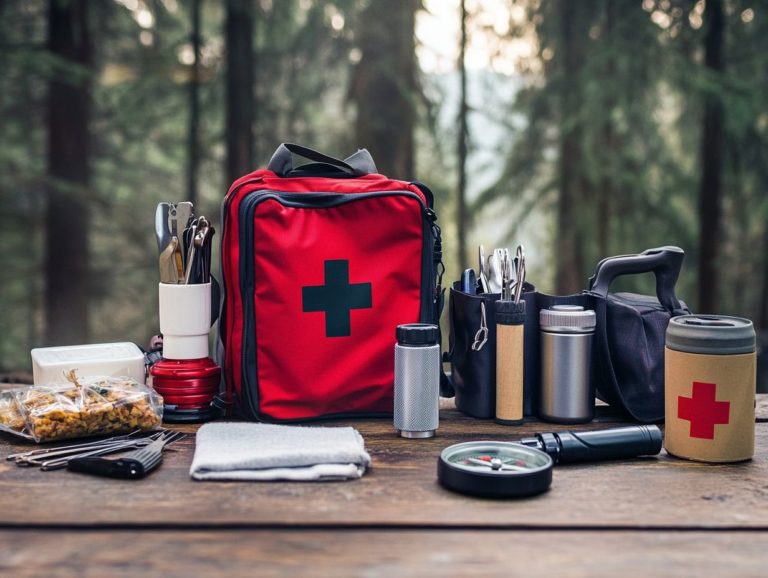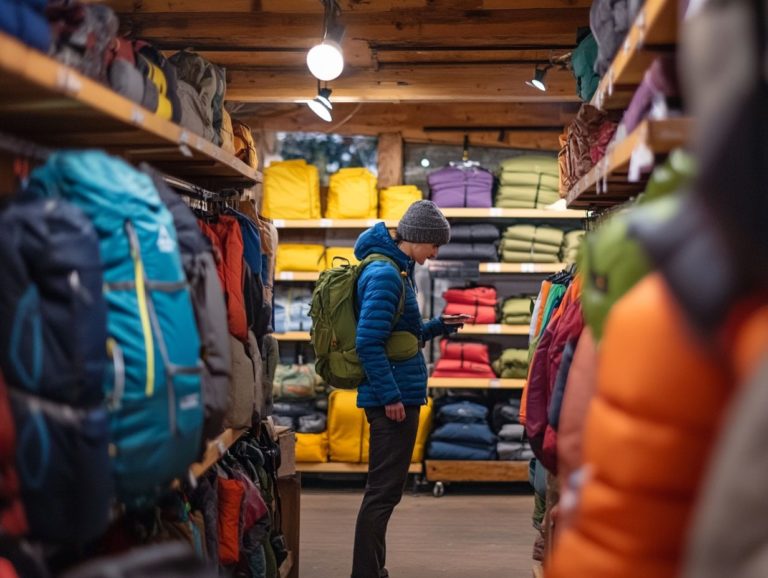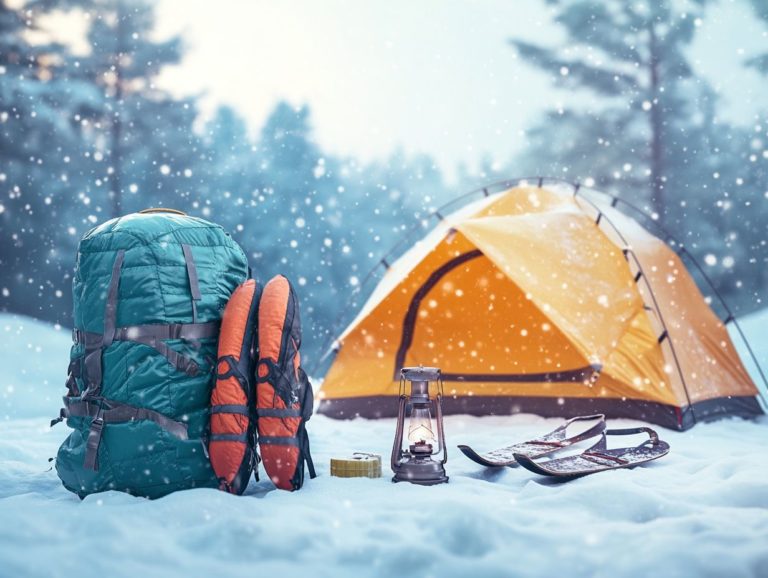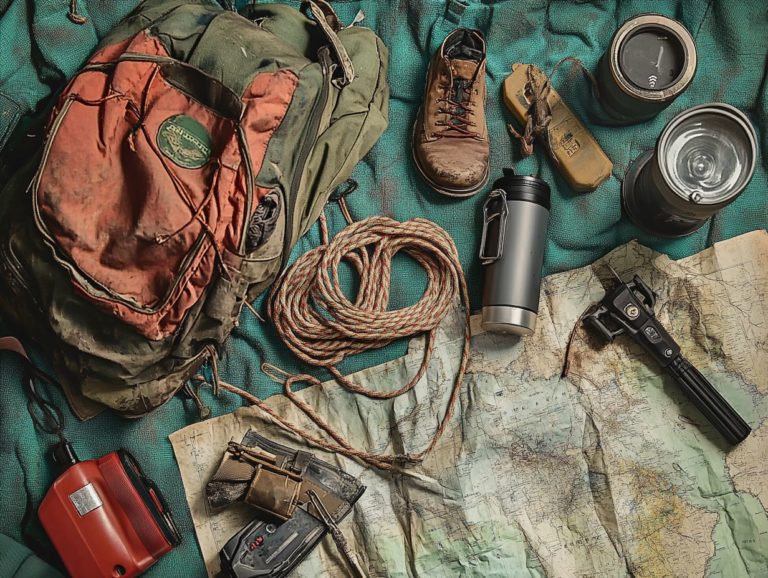How to Use a GPS for Outdoor Navigation?
Navigating the great outdoors can be an exhilarating yet daunting experience. With the right tools at your disposal, you can confidently explore new trails and uncover hidden gems.
This article delves into GPS technology what it is, how it works, and the advantages it offers for outdoor navigation.
From selecting the perfect device to troubleshooting common issues, you’ll find essential tips and tricks designed to elevate your navigation skills, ensuring that every adventure you embark on is a resounding success.
Contents
- Key Takeaways:
- Benefits of Using a GPS for Outdoor Navigation
- Choosing the Right GPS Device
- Preparing for Outdoor Navigation with a GPS
- Using a GPS for Navigation
- Troubleshooting Common Issues
- Advanced Tips and Tricks for GPS Navigation
- Frequently Asked Questions
- How to Use a GPS for Outdoor Navigation?
- What is a GPS and how does it work?
- How do I turn on my GPS?
- How do I input my destination into the GPS?
- How do I use my GPS to navigate to my destination?
- How do I use my GPS for outdoor activities like hiking or camping?
- Do I need a signal or internet connection to use my GPS for outdoor navigation?
Key Takeaways:
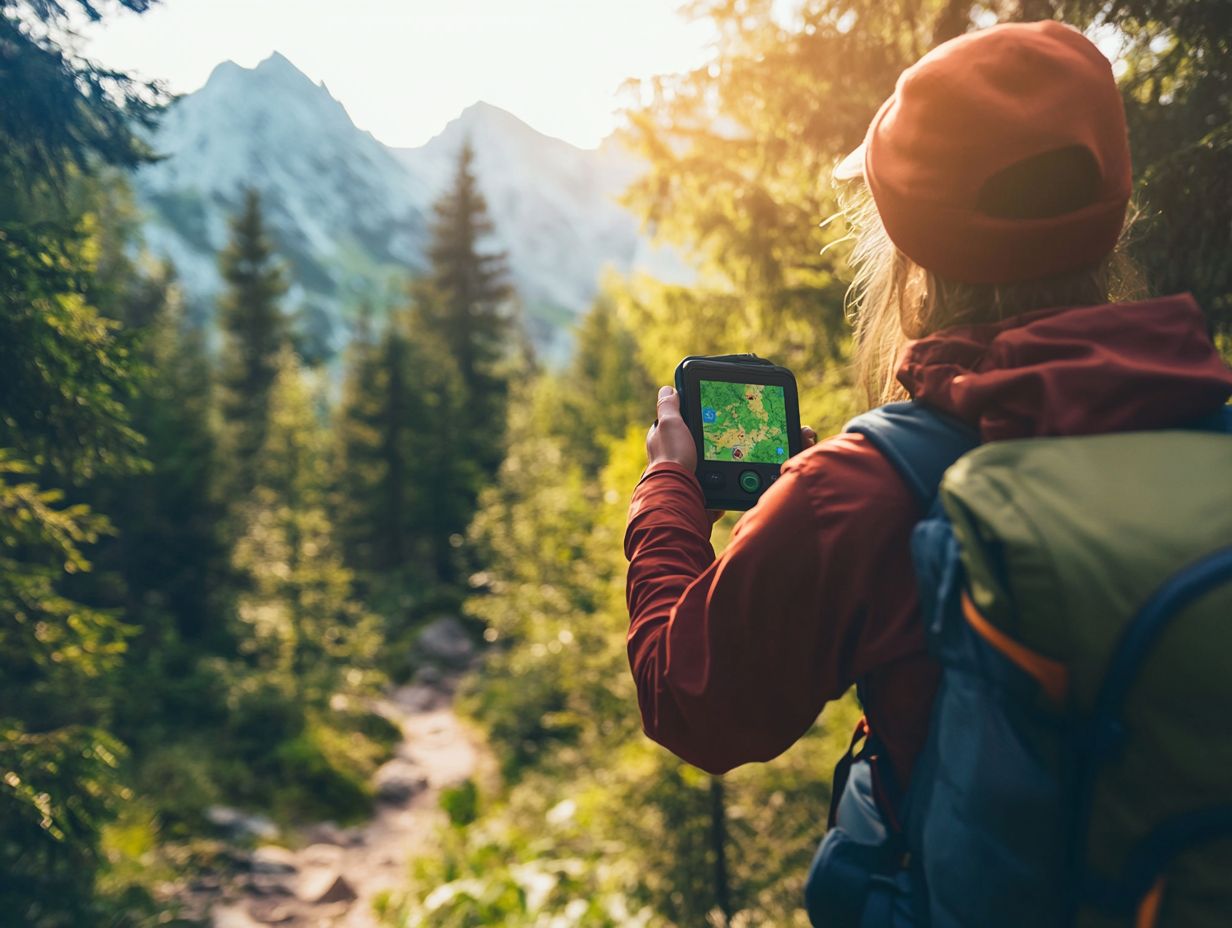
- Efficiency and accuracy are the top benefits of using a GPS for outdoor navigation. It can save time and prevent getting lost in unfamiliar areas.
- When choosing a GPS device for outdoor navigation, consider factors such as durability, battery life, and features like topographical maps and weather updates.
- To prepare for outdoor navigation with a GPS, make sure to map out your route beforehand and have a backup plan in case of malfunctions or loss of signal.
What is GPS and How Does it Work?
The Global Positioning System (GPS) is an essential technology that leverages a network of satellites to pinpoint precise locations on Earth, making it an invaluable tool for outdoor enthusiasts and adventurers like you.
These satellites continuously transmit signals picked up by GPS receivers, allowing you to determine your exact coordinates within seconds. This technology not only serves as a critical navigation aid for hikers tackling challenging trails but also acts as a lifeline in emergencies, guiding rescuers to your precise location when every second counts.
GPS assists in planning your routes, giving you the power to explore remote areas with confidence. With its real-time tracking capabilities, it enhances both safety and navigation experiences, making it a vital companion for anyone who loves immersing themselves in the great outdoors.
Utilizing a GPS for outdoor navigation significantly elevates your hiking adventures. These smart devices enhance your outdoor experience by offering precise navigation tools and real-time tracking, ensuring you stay on course.
They also include essential safety features that can facilitate search and rescue operations in case of emergencies. As you embark on challenges like the 52 Hike Challenge, having reliable navigation tools can be your key to adventure and safety!
Efficiency and Accuracy
One of the primary benefits of incorporating GPS into your hiking adventures is its unparalleled efficiency and accuracy in route planning and navigation. This technology grants you precise locations on topographic maps, enabling you to track your progress and make informed decisions about your hiking style and routes.
By utilizing GPS, you can confidently ensure you re on marked trail networks or identify when you re straying off course, all of which enhances your overall experience. GPS devices often come with handy features like waypoints (specific points you mark on your map) and breadcrumbs (small markers of your path), allowing you to mark significant locations along your journey, making it a breeze to retrace your steps if necessary.
For the ultimate hiking experience, it s wise to familiarize yourself with your device before you set out and have a backup plan in place think physical maps and a trusty compass just in case your battery decides to call it a day.
Regularly updating the software and maps on your GPS is essential for maintaining accuracy. Keeping an eye on the device’s reception signals can also alert you to any navigation discrepancies, ensuring you stay on track throughout your adventure.
Choosing the Right GPS Device
Selecting the right GPS device is crucial for an exceptional outdoor adventure, as it can profoundly impact your navigation experience.
With a plethora of options available ranging from Garmin devices to specialized hiking GPS units and smartphone apps it s vital to assess their unique features and capabilities to meet your specific needs.
Considerations like battery life, user-friendliness, and additional functionalities can significantly enhance your hiking journey, ensuring you’re well-prepared for any situation that arises.
Now that you understand the benefits of GPS for outdoor navigation, it s time to gear up and hit the trails! Prepare your device and embark on your next adventure with confidence.
Factors to Consider
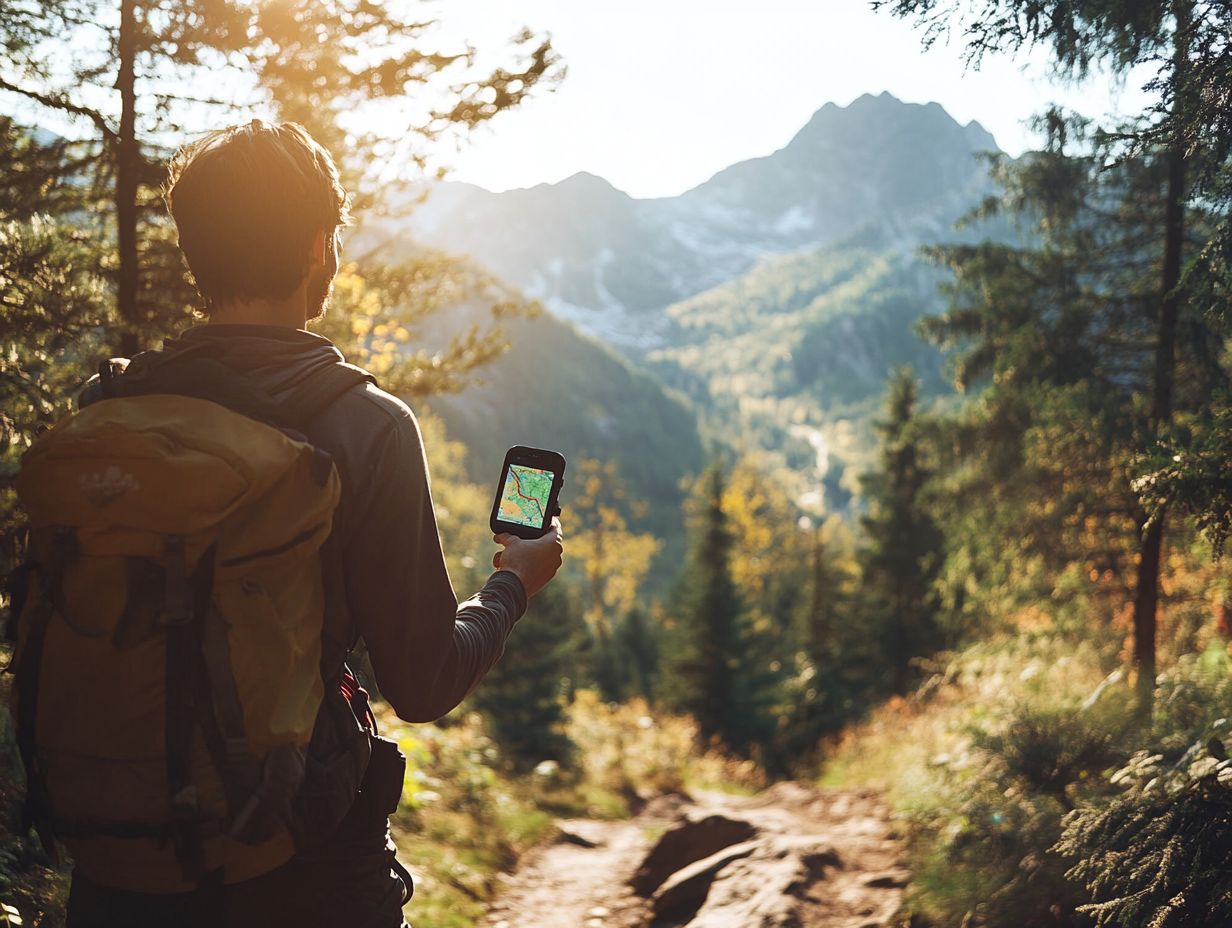
When selecting the ideal GPS for hiking, you need to consider several important factors to ensure optimal performance and reliability during your backcountry adventures. Features like battery life, user-friendly interfaces, and the ability to download topographic maps are essential, especially when you need quick and accurate navigation.
Taking the time to evaluate the unique features of different devices can greatly enhance your hiking experience and safety. A GPS device with a long battery life is a game-changer, significantly reducing the chances of running out of power during an extended trek in remote areas.
You want to be confident that your device can keep up with your journey. An intuitive interface allows you to swiftly input coordinates or access essential information, even when the pressure is on.
Critical features like built-in SOS signals can save lives in emergencies, sending distress signals to potential rescuers. By considering these factors, you can equip yourself with reliable navigation tools that contribute to safer and more efficient adventures in the wilderness.
Preparing for outdoor navigation with a GPS requires a thoughtful approach to mapping and route planning, which is vital for ensuring a safe and enjoyable hiking experience.
By leveraging topographic maps, which show the physical features of the land, including elevation and terrain, and gaining a solid understanding of the terrain, you can strategically plan your routes. Consider elevation changes, water sources, and potential hazards.
This level of preparation is not just essential for successful navigation; it makes your adventure even more exciting, especially when tackling challenges like the 52 Hike Challenge.
Mapping and Route Planning
Effective mapping and route planning are crucial when you’re utilizing GPS units for your outdoor navigation, particularly if you have a unique hiking style. With the power of GPS technology at your fingertips, you can access detailed maps, create custom routes, and adapt your plans to perfectly align with your preferences and abilities.
By leveraging these tools, you can tailor your hiking experiences, taking into account factors like terrain difficulty, scenic viewpoints, and your personal stamina. Whether you lean towards a leisurely stroll or prefer a challenging trek, being able to plot a course that aligns with your goals ensures a more enjoyable and fulfilling experience.
Advanced GPS units often come loaded with features such as elevation profiles and trail conditions, making the planning process even smoother. In this way, you re not just following paths; you re crafting journeys that truly resonate with your individual style and aspirations.
Utilizing a GPS for navigation requires you to grasp its fundamental functions and features, which are essential for unlocking the device’s full potential on your hiking adventures.
By setting waypoints, tracking your route, and accessing real-time updates and statistics, you can navigate confidently through unfamiliar terrains.
A thorough understanding of these capabilities enables outdoor enthusiasts like you to maximize the benefits of your hiking GPS unit, ultimately enhancing both your safety and enjoyment in the great outdoors.
Basic Functions and Features
The fundamental features of hiking GPS units are essential for safe navigation during outdoor adventures. Key functions like route tracking and waypoint marking can be lifesavers in unexpected situations.
With real-time location data, you can stay on course and significantly lower the chances of getting lost. Marking waypoints helps you identify important spots along the trail, whether it s a breathtaking view or a safe resting place.
Never overlook the lifesaving power of emergency contact features! They act as vital lifelines during emergencies, speeding up response times when every second counts.
In search and rescue scenarios, precise location details can mean the difference between a swift recovery and prolonged uncertainty. This highlights the importance of equipping yourself with reliable hiking GPS technology for your outdoor pursuits.
Troubleshooting Common Issues
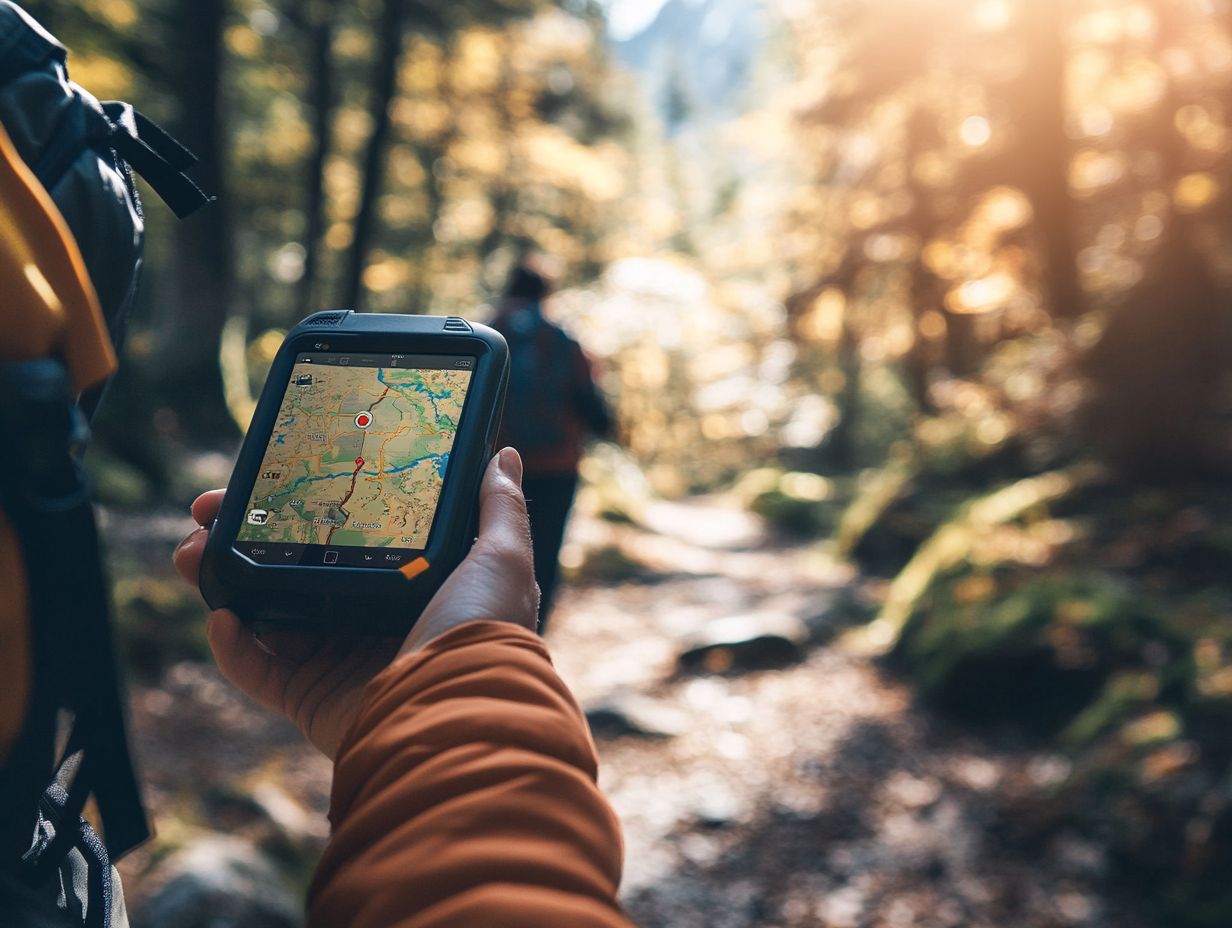
Troubleshooting common issues with GPS units is crucial for hikers who depend on this technology for navigation. Even the most reliable devices can experience hiccups.
By understanding how to tackle typical problems, you can ensure that your outdoor adventures proceed smoothly and free from unnecessary interruptions. Effective hiking tips help minimize disruptions, ensuring that your navigation experience remains seamless and enjoyable.
How to Handle Malfunctions
Handling malfunctions in your GPS device requires a strategic approach. This preparation ensures you are ready for any navigation challenges that may arise during your outdoor adventures.
Common issues like loss of signal, battery failures, and software glitches can hinder your real-time tracking and navigation. Understanding how to troubleshoot these problems helps you maintain your confidence and safety while exploring unfamiliar terrains.
Start by familiarizing yourself with your device’s features and settings. For instance, enabling offline maps can be a game changer in remote areas with weak signals. Regularly updating your software and mapping data also helps minimize glitches.
Don’t forget to carry a portable charger; power depletion can sneak up on you when you least expect it. Having a backup navigation method, such as a traditional map and compass, provides peace of mind if technology fails.
Stay calm and composed; unexpected challenges are just part of the adventure. Being prepared can turn potential frustrations into valuable learning experiences.
Advanced tips for GPS navigation can elevate your outdoor experience, especially for optimizing battery life and signal strength.
Mastering how to manage your device’s energy consumption and maintaining a robust connection can significantly enhance your long hiking excursions when resources may be limited.
This expertise equips you to depend on your GPS unit with confidence, greatly enhancing both your safety and navigation accuracy.
Optimizing Battery Life and Signal Strength
Optimizing battery life and signal strength in your hiking GPS unit is essential for ensuring successful navigation during your extended outdoor adventures.
By implementing key strategies like reducing screen brightness, disabling unnecessary features, and utilizing power-saving modes you can significantly prolong your device’s usability.
Understanding how to position your device for optimal signal reception is vital. This allows you to navigate confidently and explore the great outdoors without a hitch.
Regularly updating your device’s software can enhance its performance and introduce new features that boost efficiency.
Keeping your GPS unit free from debris and moisture is crucial, as dirt or water can disrupt signal strength.
Don’t forget to download maps for offline use it s a game changer for your adventure! This minimizes data usage and helps conserve battery life when Wi-Fi isn t in the cards.
Choosing a saved route before you hit the trail improves signal stability and simplifies navigation through complex terrains, elevating your overall outdoor experience.
Frequently Asked Questions
Let s dive into some frequently asked questions about using your GPS for outdoor adventures.
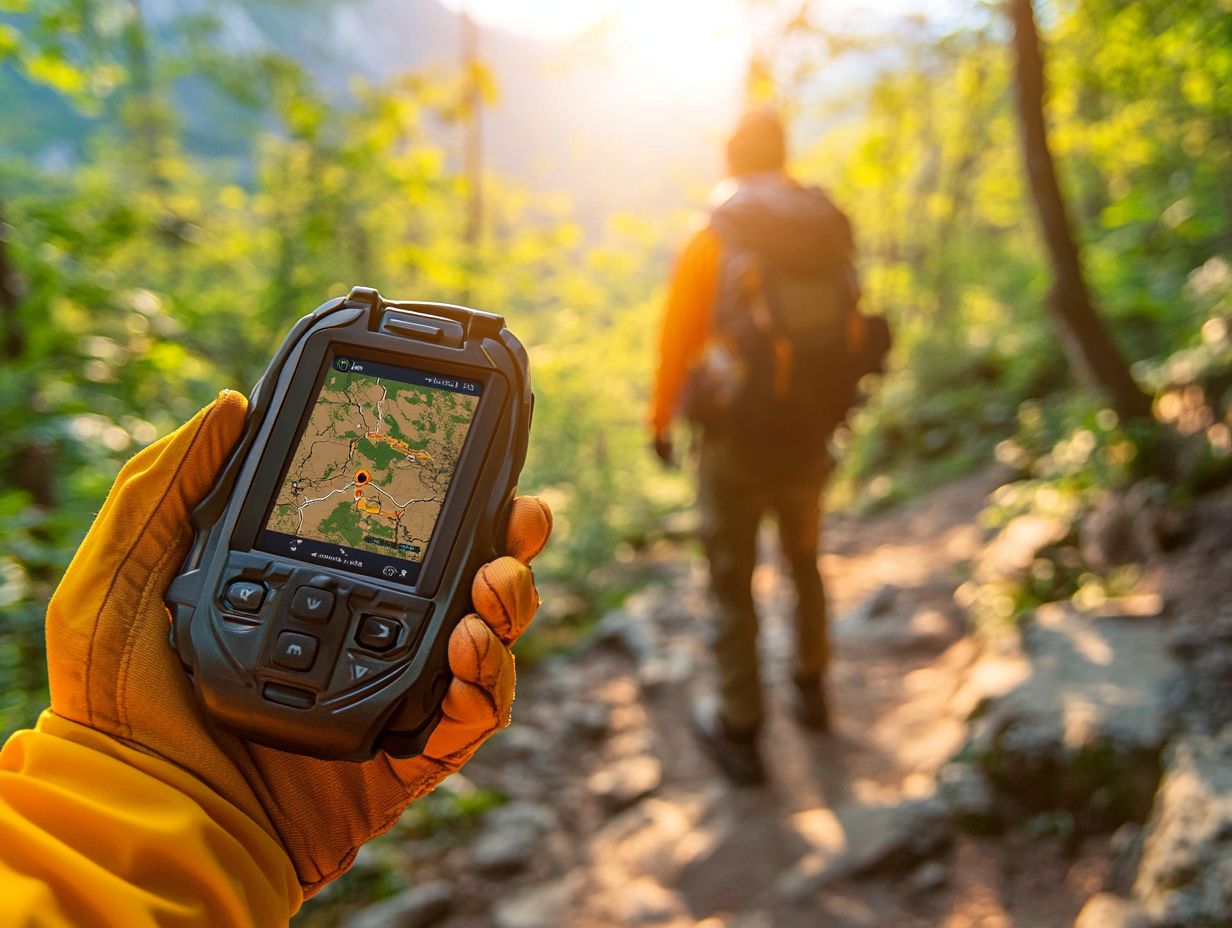
A GPS, or Global Positioning System, is a useful tool for outdoor navigation. Here are some commonly asked questions about how to use a GPS for outdoor navigation:
What is a GPS and how does it work?
A GPS is a device that uses satellite signals to determine your exact location on Earth. It works by receiving signals from multiple satellites and calculating your location based on those signals.
How do I turn on my GPS?
To turn on your GPS, simply press the power button or switch on the device. Some GPS devices may also have a specific “on” button or switch.
How do I input my destination into the GPS?
Most GPS devices have a menu or settings button that allows you to input your desired destination. You can also use the touchscreen or keypad to enter the address, coordinates, or points of interest.
Once you have inputted your destination, your GPS will calculate the route and give you turn-by-turn directions. Follow the on-screen or verbal instructions to reach your destination.
How do I use my GPS for outdoor activities like hiking or camping?
Many GPS devices have specific features for outdoor activities. You can track your route, mark points of interest, and even plan and save routes for future hikes or trips. Some GPS devices may also have additional features like weather forecasts or topographic maps.
No, GPS devices do not require a signal or internet connection to function. However, it is important to ensure that your device has a clear view of the sky to receive satellite signals and provide accurate navigation.


